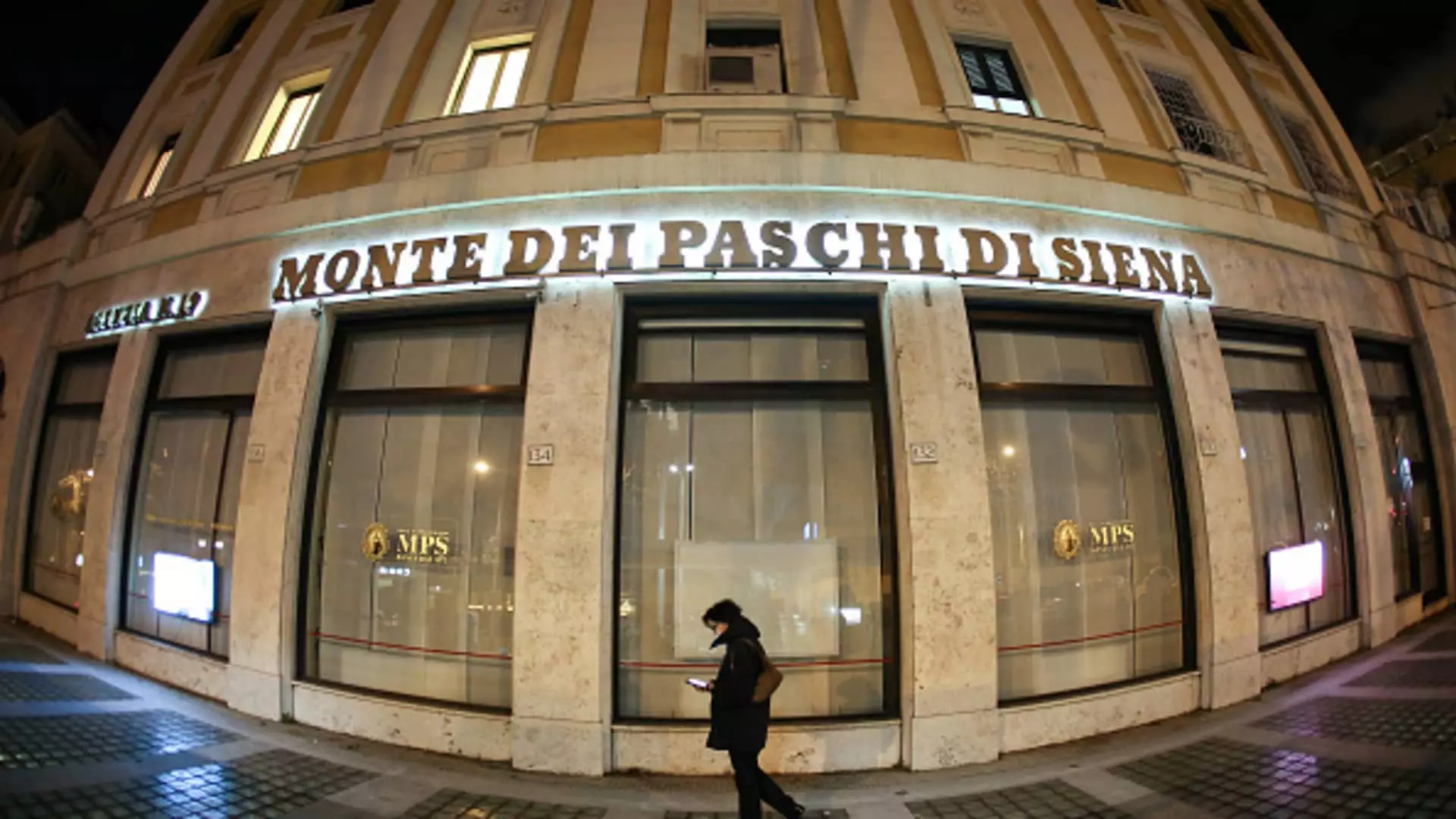In a bold move that signals the ever-shifting landscape of the Italian banking sector, Monte dei Paschi di Siena (MPS), a historically significant institution, recently announced a staggering 13.3 billion euro all-share takeover offer to acquire Mediobanca, a larger rival. As reactions unfold, this audacious attempt not only brings to light Monte dei Paschi’s rising fortunes but also raises critical questions regarding the viability of such mergers and the broader implications for Italy’s banking ecosystem.
Monte dei Paschi’s stock took a notable hit, depreciating by approximately 8% shortly after the announcement, contrasting with a surge in Mediobanca’s shares. The proposed exchange, valuing Mediobanca’s stock at around €15.99 each, represents a premium of 5% based on its recent market close. A significant aspect of the deal is that it requires a shareholder vote, slated for April 17, underlining the importance of buy-in from existing investors. Given the stakes involved, this merger could redefine the competitive dynamics within the Italian banking sector.
From a financial perspective, Monte dei Paschi estimates an impressive annual pre-tax benefit of around 700 million euros following the merger. This predicted financial gain hinges on the bank’s ability to leverage tax credits accumulated from previous losses. The proposal is further bolstered with a projection of an additional 500 million euros in benefits annually over the next six years, illustrating a clear strategy to position the combined entity for robust financial performance.
CEO Luigi Lovaglio expressed optimism regarding the merger, asserting that merging Monte dei Paschi and Mediobanca would create an “Italian champion” with a diversified business model and resilience in the face of market fluctuations. However, skepticism exists among analysts, with KBW’s Hugo Cruz and Ben Maher pointing out the limited synergy potential between the two banks, potentially highlighting the inherent risks in this ambitious financial maneuver.
Monte dei Paschi di Siena, which boasts the title of the world’s oldest bank, has endured a tumultuous journey through financial turbulence, including a significant state bailout in 2017 after years of crippling losses. Under the leadership of Lovaglio, formerly with UniCredit, the bank has managed to recuperate from its previous struggles, culminating in the declaration of its first dividend in 13 years. This newfound stability raises the stakes for the proposed acquisition of Mediobanca, suggesting that Monte dei Paschi’s leadership is positioning itself as a formidable player in the banking sector.
Despite this historical context, it is crucial to evaluate the feasibility of merging two large entities. The complexities of integrating operations, cultures, and strategic visions cannot be understated. As the Italian government has also maintained an 11.73% stake in MPS, the state’s influence and interest in the merger outcomes will surely play a role in the transactional landscape.
This takeover bid occurs within a context of increasing mergers and acquisitions in Italy’s banking sector. With other major players like UniCredit actively pursuing their own merger strategies, the competitive atmosphere is heating up. UniCredit’s previous interest in acquiring Banco BPM illustrates a trend towards consolidation as banks look to fortify their positions against economic uncertainties.
Moreover, the dynamics of Italian banking are ripe for transformation. The recent actions of major stakeholders, including Delfin and Francesco Gaetano Caltagirone, who hold significant stakes in both financial institutions, reflect the interconnected nature of corporate governance and investment strategies within Italy’s banking ecosystem. This interconnectedness could influence shareholder sentiment and the outcome of the upcoming vote.
As Monte dei Paschi di Siena embarks on this ambitious bid for Mediobanca, the potential outcomes remain uncertain. While the merger has the capacity to reshape the Italian financial landscape, it is fraught with obstacles, including the necessity for shareholder approval and the realization of projected synergies. The call for consolidation in Italy’s banking sector seems more pressing than ever, as players strategize for resilience in an evolving market. Ultimately, whether this deal heralds a new era of stability for Monte dei Paschi or proves to be a perilous gamble will depend on the execution of this bold vision, the alignment of interests among stakeholders, and the broader economic climate in which these institutions operate.

